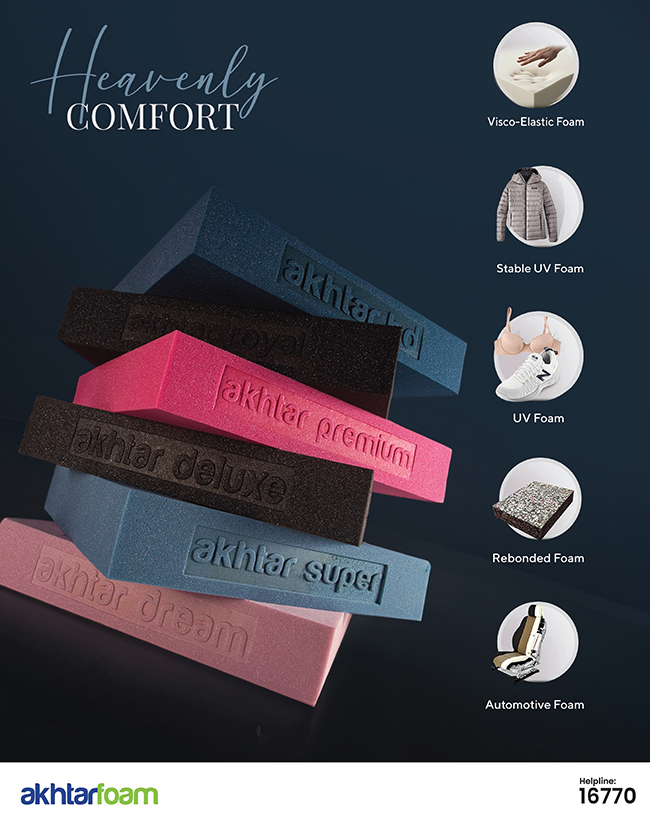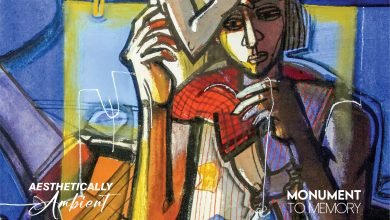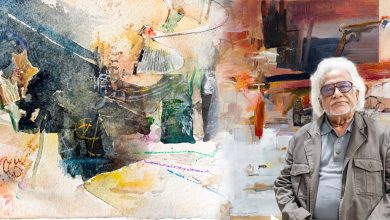Life doesn’t run a clear course. Yet, an artist’s calling almost always leads him to where his innermost self would flourish to its very best form, and Mohammad Eunus’s life is a prime example of such an eventuality.
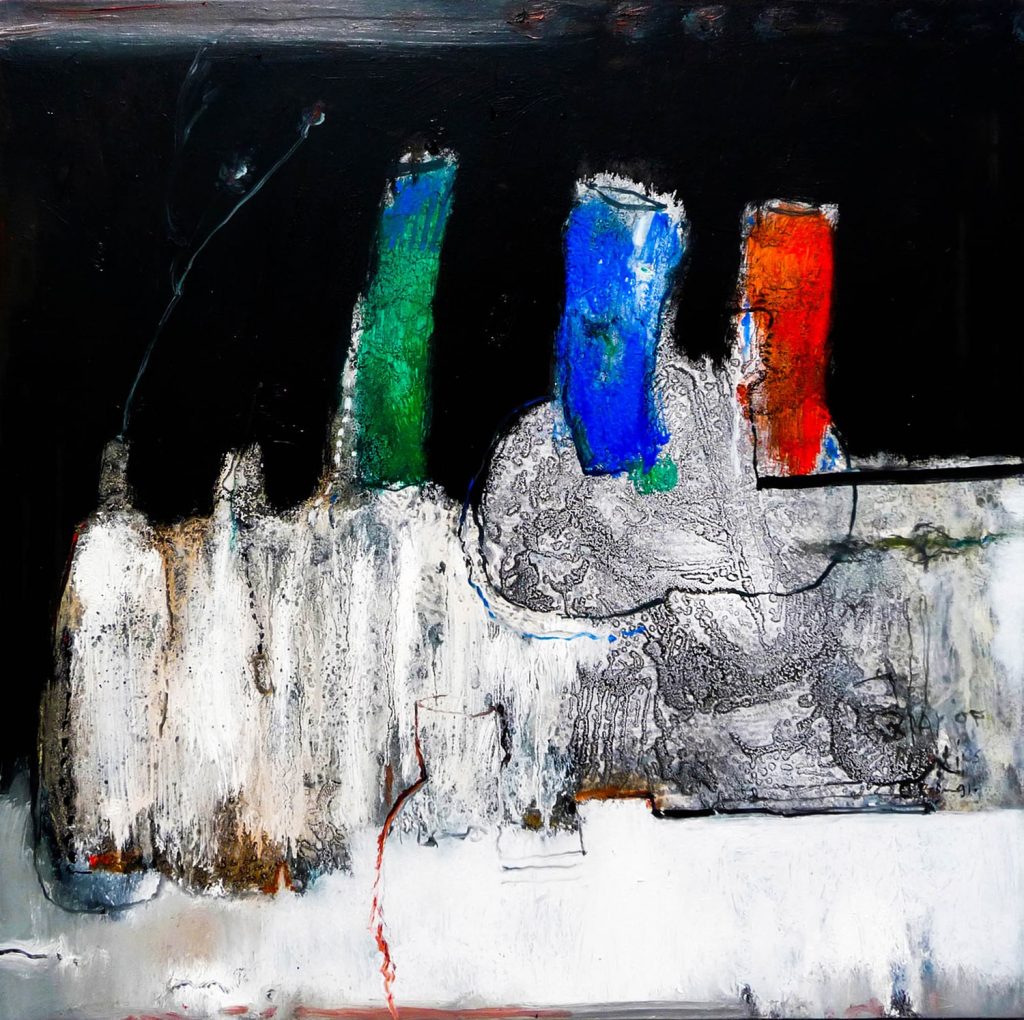
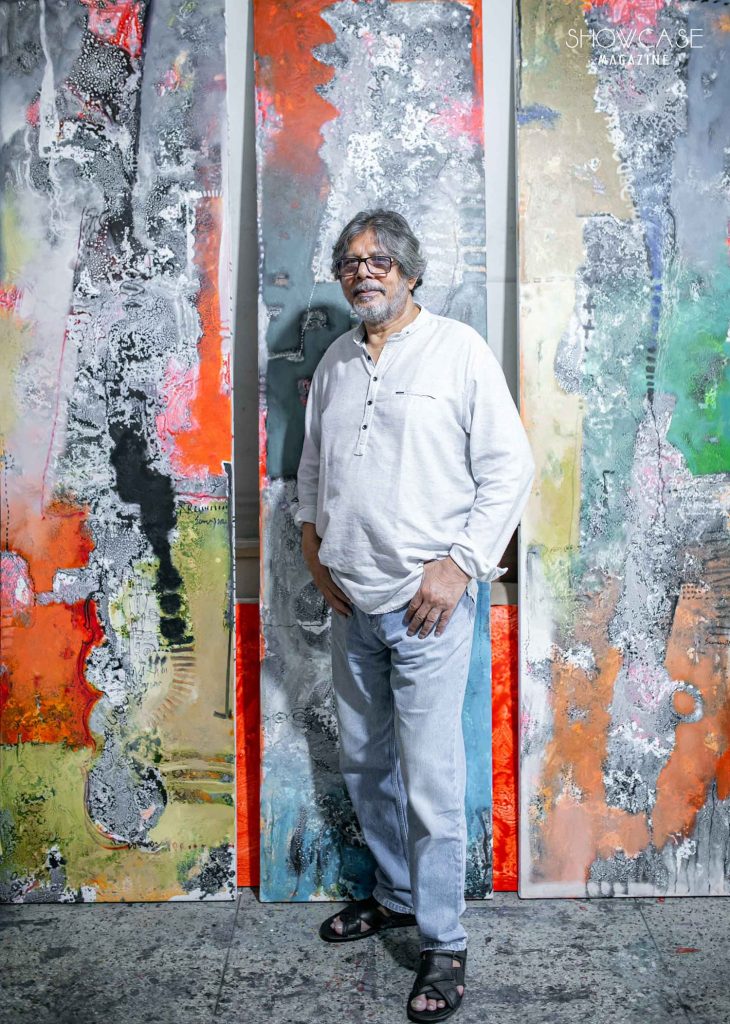
Hailing from Thakurgaon, Mohammad Eunus’s childhood did not hold any clear indication that he would become such a formidable icon in the abstract art scene of the country. He did feel motivated by his father, who, despite being a teacher who taught several subjects, had a creative knack.
Mohammad Eunus’ time in the scouts also helped to nourish his creative side. As scouts are required to hand-craft structures and design their campsite during an event, it also helped him. “We had to do those back in school which was similar to installation art,” he remarks. He also spent some time making kites of various types, patterns, and colours.
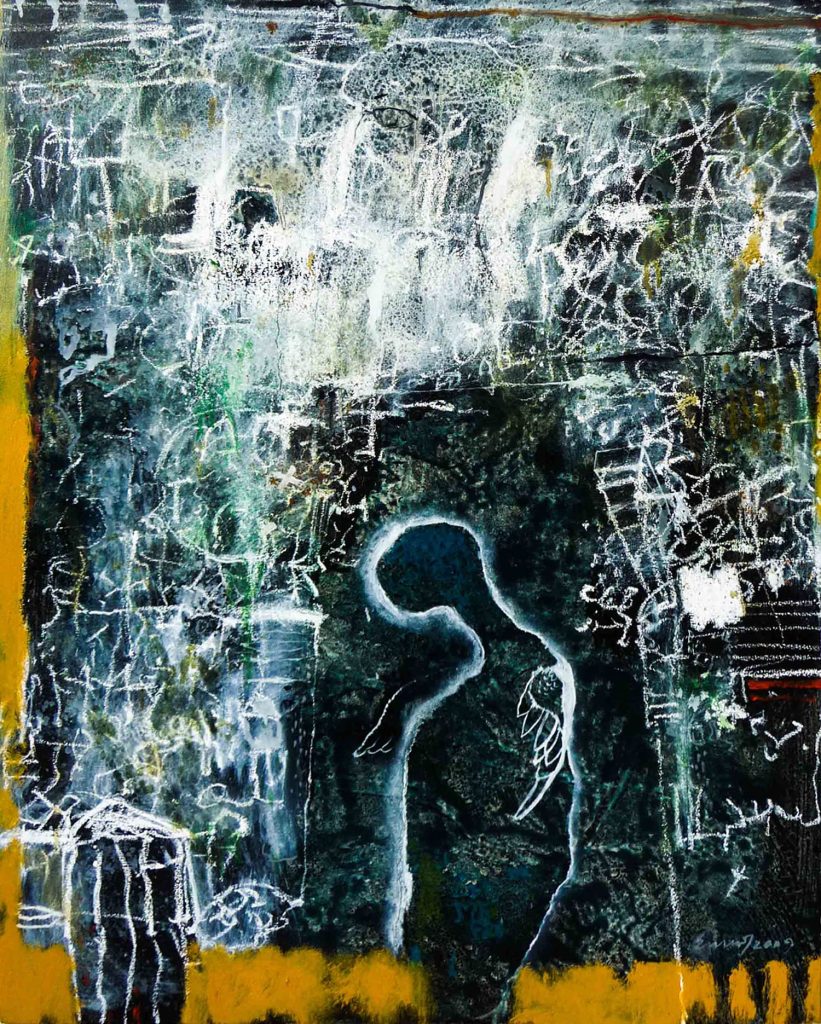
However, he regarded his creative pursuits simply as extracurricular activities back then. Throughout school, he didn’t discover his love for drawing and painting. That came later.
Mohammad Eunus’ father had wanted his son to study at the medical college in Dinajpur, and he was preparing to do just so. After his S.S.C. was completed, he was spending a leisurely period. That’s when he noticed a signboard artist at a shop in front of his house. Inspired by the paintings, and perhaps responding to his artistic calling, he opened up his shop nearby.
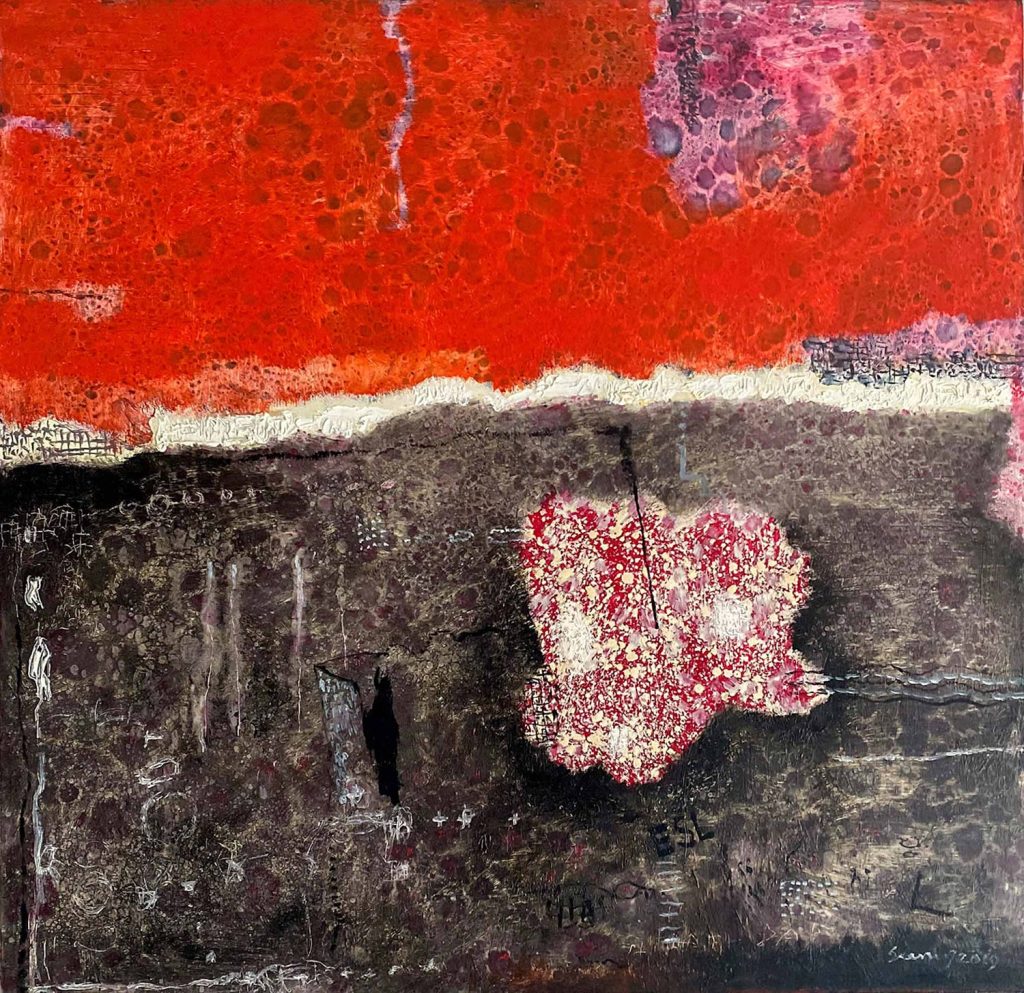
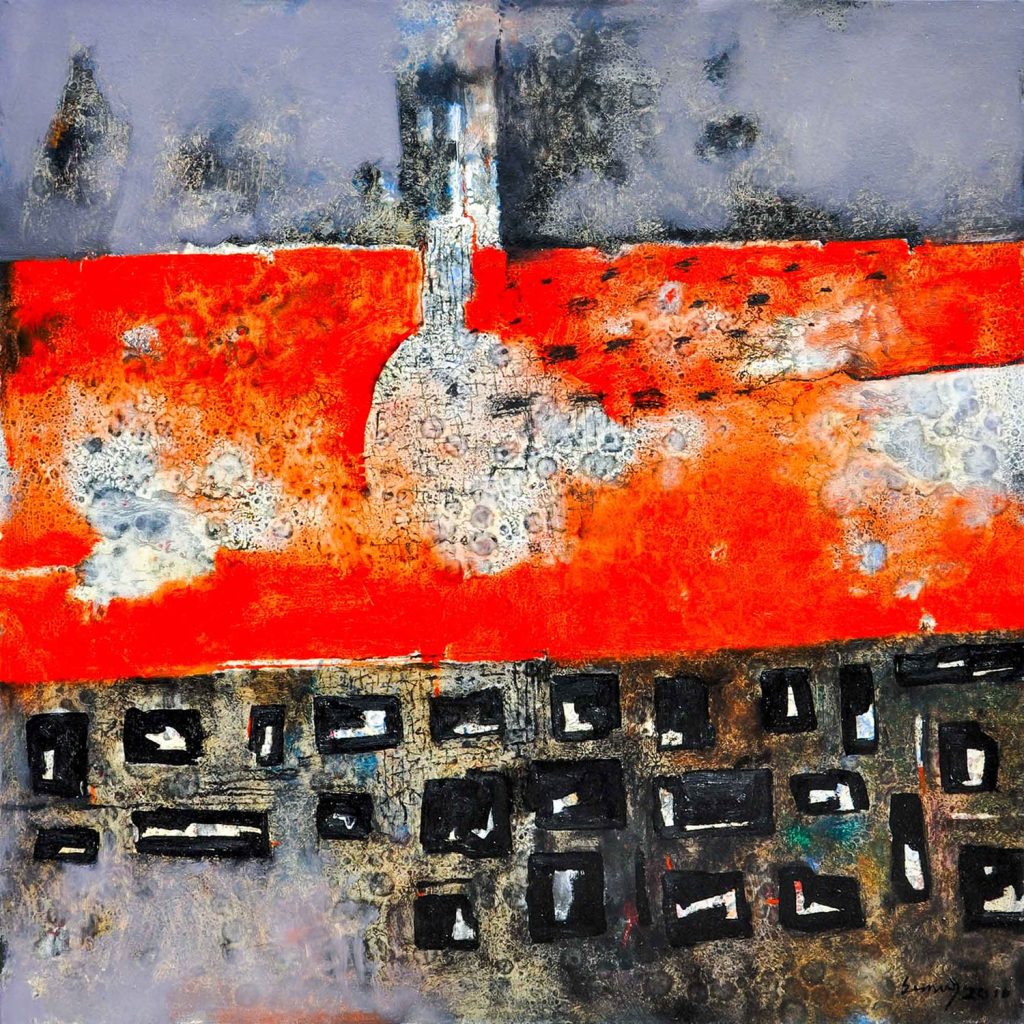
He would make cinema slides, jatrapala banners, stage play banners, etc. all while he didn’t even know about Charukola, which back then was named Faculty of Fine Art (FFA), University of Dhaka (DU). Then one day, as fate would have it, a student named Saifur Rahman from that faculty stumbled upon Mohammad Eunus’ humble shop.

He first learned about the art college from that student, and that it was in Dhaka. At that age, he felt that studying in Dhaka would be better than studying in Dinajpur. The fact that he was picking art over medical studies didn’t really seem important back then.
One fine day, while his family knew he was going to Dinajpur to study in the medical college, Mohammad Eunus instead went to Dhaka. He stayed as a guest with Saifur Rahman for about 18-20 days while he practised his skills. After that, he sat for the exam and placed 3rd. He tore off the merit list and mailed it to his father along with a small note.
At first, his father was miffed, but he didn’t stop Mohammad Eunus from studying art. Later at an exhibition, his father came and purchased a piece of art, all in secret. Mohammad Eunus came to know about it much later.
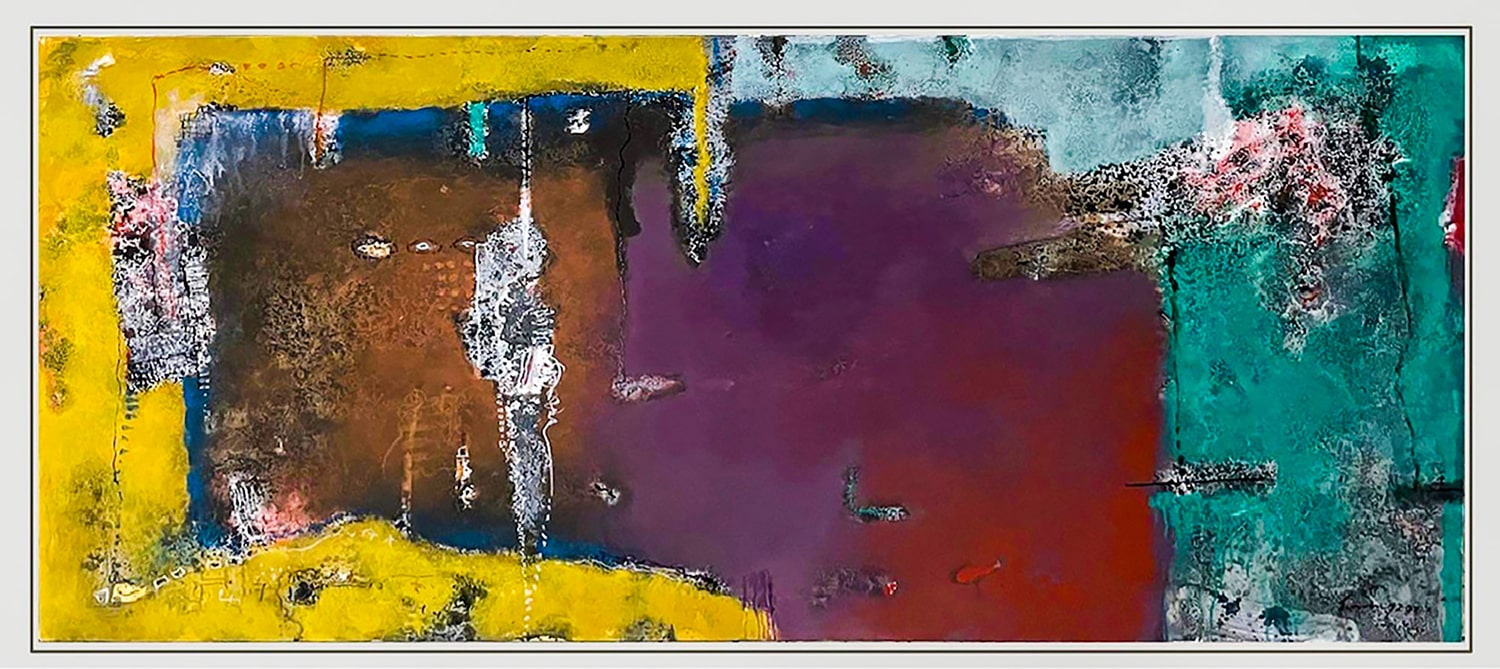
If things had gone differently, would he have become a doctor by now? When faced with that question, Mohammad Eunus doesn’t contest the fact that yes, that was certainly a possibility.
“However, I think I’m at the right place,” he says.
After he stepped through the doors of Charukola, his life was changed forever. “My drawing before and after coming to Charukola was worlds apart,” he says, emphasizing the importance of proper training for an artist.
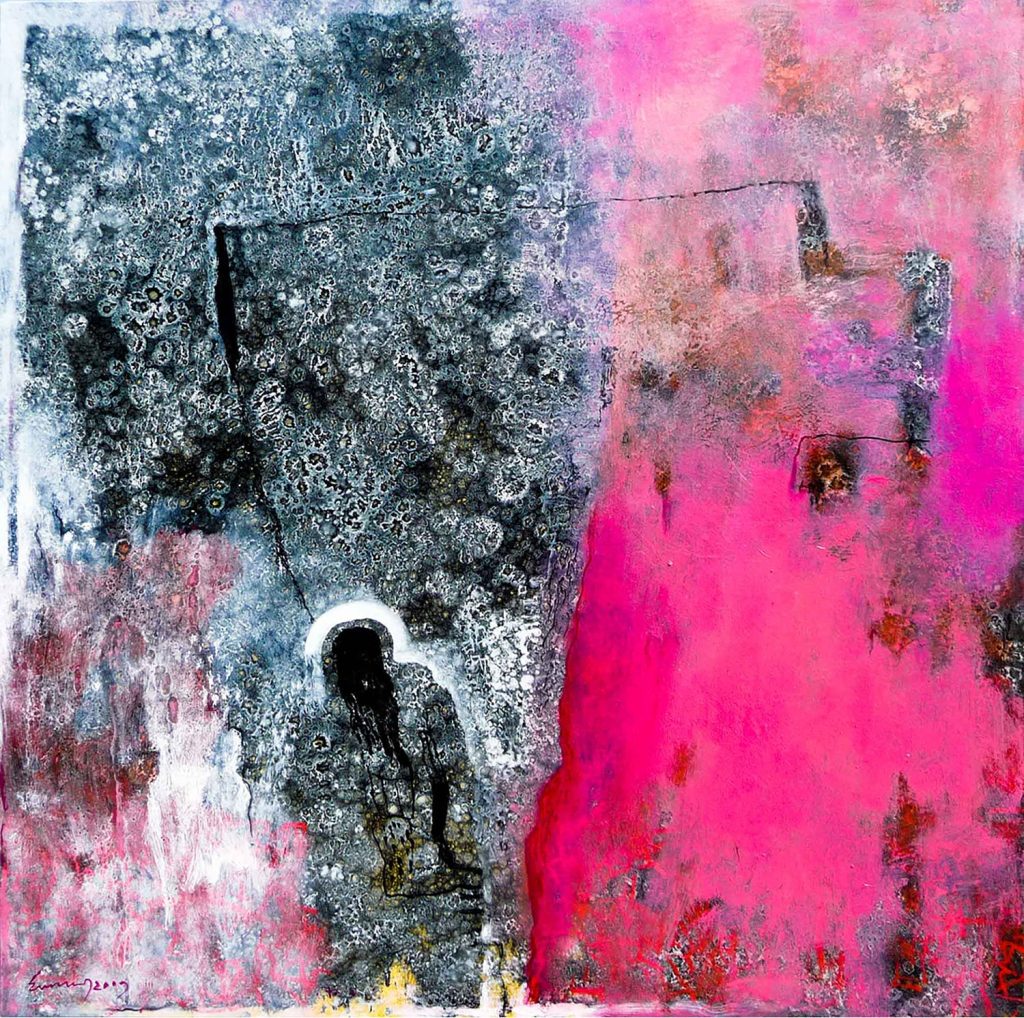
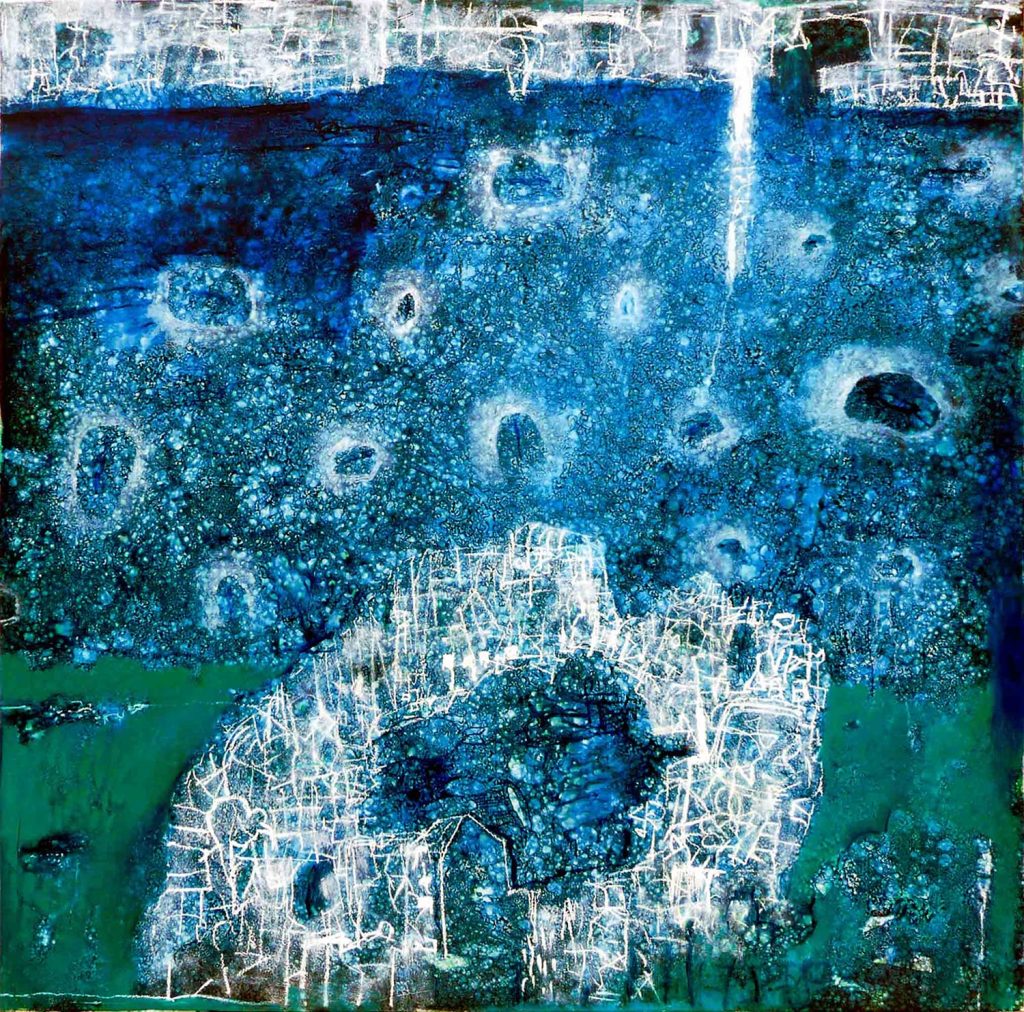
While reminiscing, he especially mentioned his teacher Mahbubul Amin, who was a great mentor and a guardian to his students. He helped cultivate many important habits and principles that Mohammad Eunus feels have worked to bring him success.
After he started his second year at Charukola, his teachers insisted that he enrol in the Graphic Designing course instead of Drawing and Painting. despite being more enthusiastic about drawing, he listened to his teachers. However, that didn’t put any damper on his works. He received the best award in Graphic Design when he was a third-year student. He also received the best award in Painting when he was a fourth-year student, competing with the students of the Drawing and Painting Department, and in his fifth year, he won the Shilpacharya Zainul Abedin Best Award in Painting.
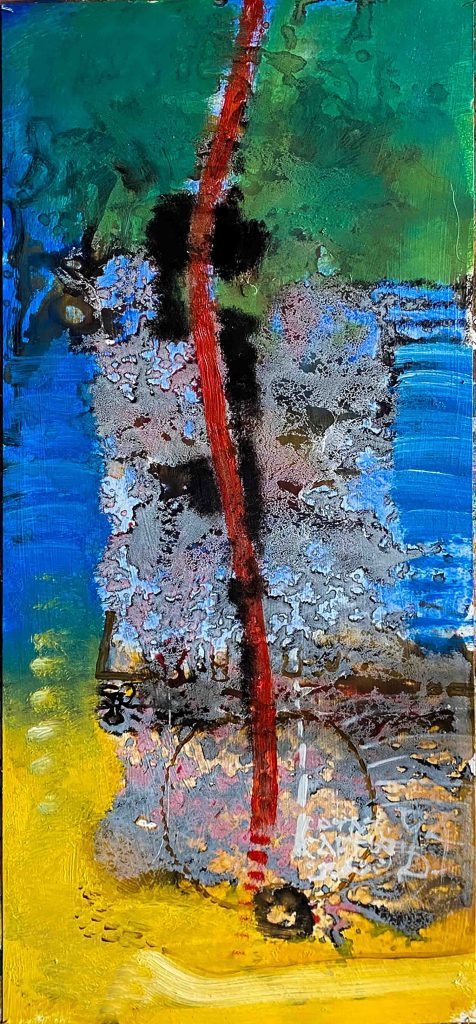
“I have always given less importance to Graphics Designing,” he says, mentioning that drawing and painting were his true passion. After receiving the Shilpacharya Zainul Abedin Best Award in Painting, he did a lot of realistic paintings. He remembers that the number would be close to a thousand. Most of them were sold over time.
After passing from Charukola, he got a job at BTV and worked there for 4 years as a studio designer. At the same time, he was pursuing his master’s and started transitioning from realistic to abstract themes. He never got to sit for the exam, as he got married and then received a scholarship to study in Japan.
In his first year studying there under the guidance of Miyazaki Susumi, he was still finding himself. Teachers would come to inspect the students’ work every week and urge them to find their individuality.
Then, when Mohammad Eunus was in his second year, a surprising event changed the course of his life. He’d left his art supplies and canvas and went to eat. When he came back, he saw that a bottle of turpentine had spilled over his canvas, giving way to a mess of textures. He left the textures as they were and drew on them. When his teachers came for inspection later, they noticed it immediately and said, “Yes, this is what we wanted. This is yours.” Mohammad Eunus remembers this comment as something that has inspired him significantly. Mohammad Eunus didn’t have to look back after that. He continued developing his own style, playing with textures. He mentions that making an oil painting look as transparent as watercolour is one of his major skills. He received numerous awards for his accomplishments. But he did have to work hard to reach the position he is in now.
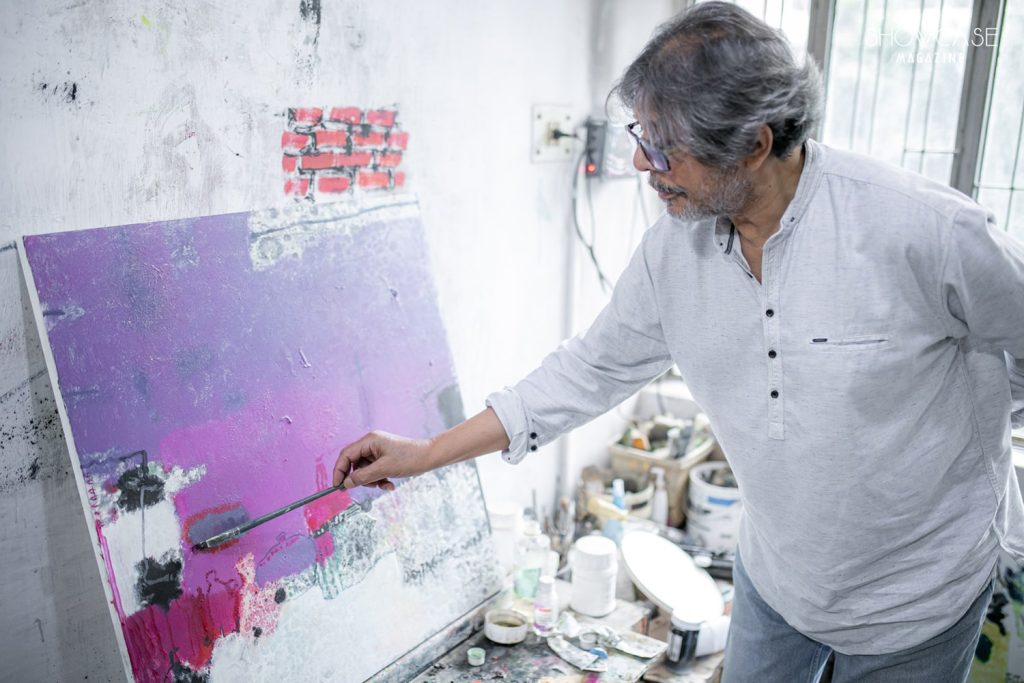
“Finding beauty out of the ugly,” that’s how he describes the journey of an abstract artist.
What everyone finds uninteresting, an artist finds art in it.
“If someone asks me to make him understand, I say it’s not something to understand, it’s something to feel, much like a musical composition,”
he says.
“Just like how a sunset might inspire different feelings in different people, an abstract painting may also be interpreted differently by each visitor. It might not be what the artist had planned for, but the experience is still valid.”

